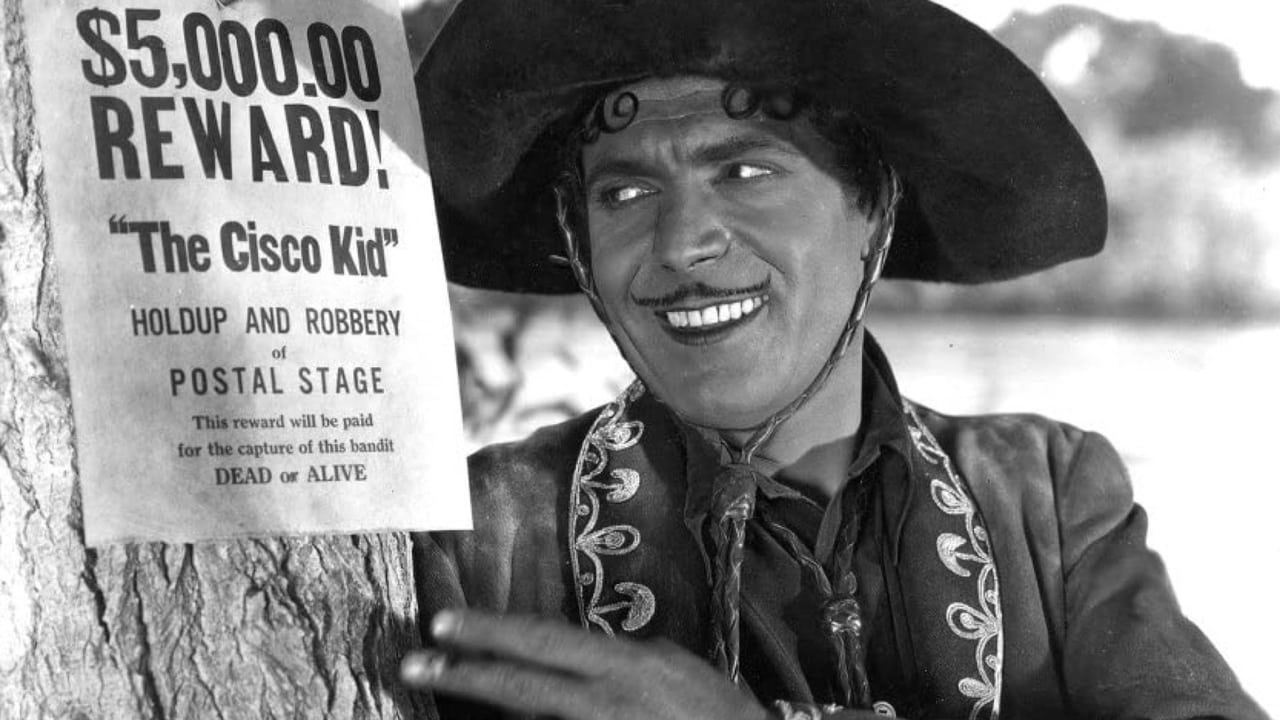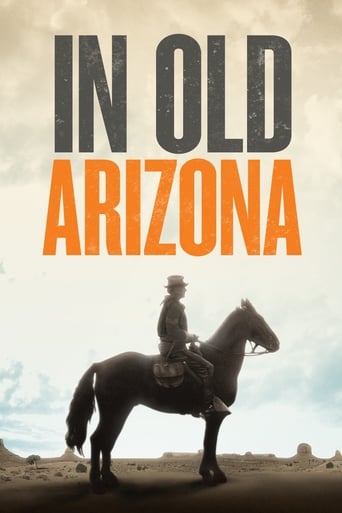

Available on a good Fox DVD, this creaky movie is an absolute must-see, thanks almost entirely to Dorothy Burgess, who makes a wonderful Tonia Maria. Alas, the title role is somewhat hammily enacted by Warner Baxter, who won the year's most prestigious acting award for his performance as the Cisco Kid. Admittedly, Edmund Lowe is even less convincing as Sergeant Mickey Dunn. Worst of all is the flat-footed direction. Nonetheless, the movie was so popular, it inspired a sequel, The Cisco Kid (1931), in which Baxter and Lowe repeated their roles, while the super-lovely Conchita Montenegro played the Kid's primary love interest, and Nora Lane assumed the role of a pretty American girl. The 61 minute movie was popular enough, but it was not until 1939 that the character was revived in The Return of the Cisco Kid. Baxter then relinquished the role to Cesar Romero who played the lead in six Fox "B" features until 1941. In 1945, Monogram revived the character in a series with Duncan Renaldo.
... View More"In Old Arizona" stars Warner Baxter in an Oscar-winning performance as the Cisco Kid, an outlaw who's double crossed by his love and rides off into the night after meting out his revenge. It's a rather bleak ending actually, and the film leading up to it is pretty racy for the time, dealing with things like infidelity quite frankly. It's a bit slow-paced and leisurely, but it's not half bad. It was nominated for a Best Picture Oscar in the second year of the Academy Awards, and it's much better than the other two competitors I've managed to see ("Alibi" and the film that won the Best Picture Oscar, "The Broadway Melody").I don't know that Baxter's performance is a stand out in the history of movie performances, but he does exhibit quite a bit of charm, and he's natural with the new medium of sound in a way that many other actors at the time weren't. Edmund Lowe, who plays the soldier out to get the Cisco Kid and who looks like a young John Wayne, is also quite good and provides the movie with much of its suggestiveness.The film was also nominated for Best Director (Irving Cummings), Best Writing (Tom Barry) and Best Cinematography (Arthur Edeson).Grade: B
... View MoreNot only is this the first major sound western, it is the first done out of doors. The sound isn't all that great, booming and fading, but consider that this was made in the "dawn of sound" era, 1928, and at that time the great MGM had yet to make any talking pictures. The camera work, however, is excellent, even if limited as to action by the tyranny of the new microphone. Fox films were keeping up with pioneering Warner Brothers fairly well.Suggested by "The Caballero's Way", a story by William Sidney Porter (O. Henry), the main character, "The Cisco Kid", has been considerably upgraded. Porter's "Kid" was a ruthless bandit, who didn't like people who got in his way, especially sheriffs. In the film, the authority figure is not a sheriff, but an army Sergeant co-opted by the locals to run down the "Kid" and "terminate him with extreme prejudice". The movie has added what amounts to an extensive prologue to the original story elements, in which the "Kid" robs a stage carrying considerable gold, thus depriving a number of the locals of considerable cash.The Sergeant seduces, without too much trouble, the girl-friend of the "Kid". He persuades her to betray him, more or less Judas fashion, but the wily bandit overhears the plot and takes a cleverly sadistic revenge. In case you haven't read the story or seen the film, I'll say no more. When I first commented on IN OLD ARIZONA some years ago, I had not then seen the excellent DVD now available, and was depending on my memory of seeing the movie in 1928, when it was in general release. (Yeah, I'm that old!) As a result, I described an ending which either belonged to another "Cisco" movie, or was perhaps an alternate ending to this one. In any case, the DVD presents the same ending as the O. Henry story.Despite all the shortcomings, compared to modern films, this old museum piece has considerable pictorial charm. There is a brief sequence showing ham and eggs frying, with appropriate sound effects, that brought out a gasp from the audience in 1928. Sound and sight, Oh, boy! The outdoor sequences, possibly using some process photography, look to be depicting the Tonto Rim country of Arizona, but some of the rocks might just have been in Griffith Park! Now, the acting, beyond that of Warner Baxter, is about high school senior play level, if that good. Edmund Lowe is merely mediocre, but Dorothy Burgess, alas, is really pitiful. Baxter, himself, seems very mannered, probably going slow to be sure he didn't slip on his "mexican" accent. The best acting is found among the "bit" players. They seem more comfortable in their roles and project more naturally than the principals. One might be forgiven for suspecting that they got less attention from the directors. It does take some patience to "enjoy" this old film, but I can't say I was bored. For fullest enjoyment, you have to project yourself, if you can, back to 1928, and imagine that you can actually smell that ham frying in the skillet. And the "Kid" and the girl never ate it! They "retired" into another room.
... View MoreThis film has been of interest to me for some time now, for a number of reasons. I finally managed to get a copy and saw it yesterday. I now understand why it is not currently generally available-it is dated, of, at best, average quality, not without charm or appeal, to be sure, but the interst here is for a relatively small audience. Not a bad film, by any means, just not terribly engaging. I will say that a knowledge of Spanish greatly enhanced my own enjoyment of this film, as two or three very good lines were delivered in Spanish.I have now seen three of the five Academy Award Picture nominees in their entirety (and am unlikely to ever see one, The Patriot, as it is reportedly a "lost" film) and part of Alibi. I now understand how Broadway Melody won that year. Of the choices I've seen, it is clearly the best of an average lot. The Patriot may well be better, but I'm unlikely to ever be able to judge that point.I enjoyed the film, warts and all, but it is rather dated. But, for my money, any movie that gives the leading man the nickname, "El Conejito" (Little Rabbit) can't be too bad. Worth watching. Recommended to old film buffs and film historians.
... View More